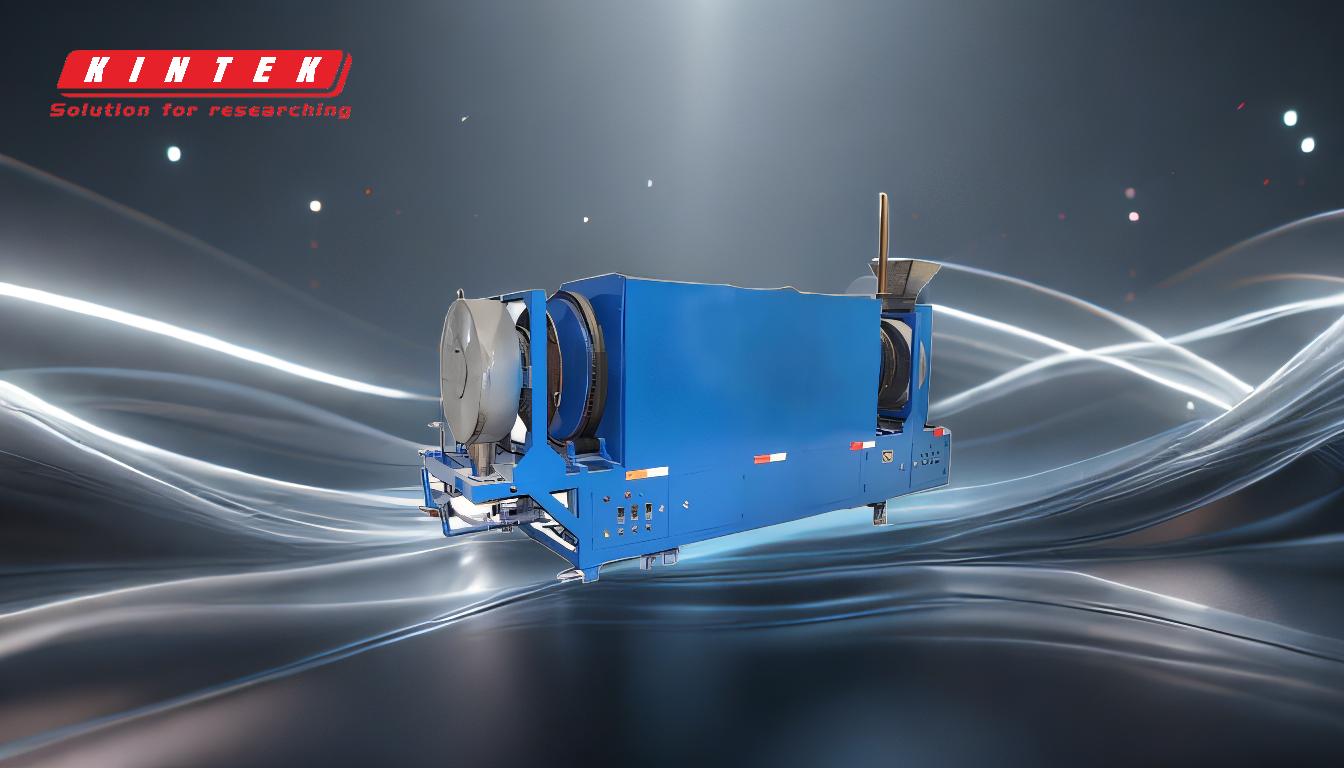The heat source for pyrolysis can vary depending on the specific process and desired outcomes. Common heat sources include burning part of the biomass itself, using inert combustion gases or solid materials like sand as energy carriers, or employing external heat sources such as hot flue gas, electrical induction, or microwaves. Heat transfer can be direct (e.g., burning char and biomass) or indirect (e.g., through metal walls or built-in tubes). Additionally, partial combustion inside the reactor or using catalysts can accelerate the pyrolysis process. These methods ensure efficient thermal decomposition of biomass into desired products like bio-oil, syngas, or biochar.
Key Points Explained:

-
Burning Part of the Biomass:
- In batchwise pyrolysis processes, such as those used in charcoal kilns, heat is generated by burning a portion of the biomass with controlled air admission.
- This method is simple and cost-effective but is less efficient and suitable for small-scale operations.
- The heat generated is used to pyrolyze the remaining biomass, producing charcoal as the primary product.
-
Inert Combustion Gases:
- Industrial pyrolysis processes often use inert combustion gases (e.g., nitrogen or carbon dioxide) in the absence of oxygen to provide heat.
- This method is continuous and achieves high efficiencies, making it suitable for large-scale operations.
- The inert gases prevent unwanted combustion reactions, ensuring that the biomass undergoes thermal decomposition rather than burning.
-
Solid Heat Carriers (e.g., Sand):
- In fast pyrolysis processes, solid materials like sand are used as energy carriers to provide rapid and uniform heating.
- The sand is heated externally and then recycled through the reactor to transfer heat to the biomass.
- This method is ideal for producing high yields of gas or liquid products, such as bio-oil or syngas.
-
Hot Flue Gas:
- Hot flue gas, a byproduct of combustion processes, can be used to dry the biomass feedstock and provide heat for pyrolysis.
- Combustible gases in the flue gas can be partially combusted to generate additional heat.
- This method is energy-efficient as it utilizes waste heat from other processes.
-
Leftover Char and Biomass:
- Char and residual biomass from the pyrolysis process can be burned to provide heat for subsequent pyrolysis cycles.
- This creates a self-sustaining system where the process generates its own heat, reducing the need for external energy inputs.
-
External Heat Sources:
- Heat can be supplied through external sources such as directly-fired fuel, electrical induction, or microwaves.
- These methods offer precise control over temperature and heating rates, which is critical for optimizing product yields.
- Electrical induction and microwaves are particularly useful for small-scale or laboratory setups.
-
Heat Transfer Mechanisms:
- Direct Heat Transfer: Involves burning char and biomass directly within the reactor to provide heat.
- Indirect Heat Transfer: Heat is transferred through metal walls, tubes, or plates, ensuring that the biomass does not come into direct contact with the heat source.
- In fluidized bed reactors, a carrier like sand is heated externally and then circulated to provide uniform heating.
-
Partial Combustion and Catalysts:
- Partial combustion of biomass inside the reactor can generate heat while also producing syngas.
- Catalysts can be used to lower the activation energy required for pyrolysis, reducing the overall energy demand and accelerating the process.
By understanding these heat sources and transfer mechanisms, equipment and consumable purchasers can select the most appropriate pyrolysis system based on their specific needs, such as scale, desired products, and energy efficiency.
Summary Table:
| Heat Source | Key Features | Applications |
|---|---|---|
| Burning Part of the Biomass | Simple, cost-effective, small-scale | Charcoal production |
| Inert Combustion Gases | Continuous, high efficiency, prevents combustion reactions | Large-scale industrial pyrolysis |
| Solid Heat Carriers (e.g., Sand) | Rapid, uniform heating, ideal for gas/liquid products | Fast pyrolysis for bio-oil or syngas |
| Hot Flue Gas | Energy-efficient, utilizes waste heat | Drying biomass and providing pyrolysis heat |
| Leftover Char and Biomass | Self-sustaining, reduces external energy needs | Continuous pyrolysis cycles |
| External Heat Sources | Precise temperature control, flexible for small-scale setups | Laboratory or small-scale pyrolysis |
| Direct Heat Transfer | Burns char/biomass directly | Batchwise pyrolysis |
| Indirect Heat Transfer | Heat through metal walls/tubes, no direct contact | Fluidized bed reactors |
| Partial Combustion and Catalysts | Accelerates pyrolysis, reduces energy demand | Syngas production and process optimization |
Need help selecting the right pyrolysis system for your needs? Contact our experts today for tailored solutions!








